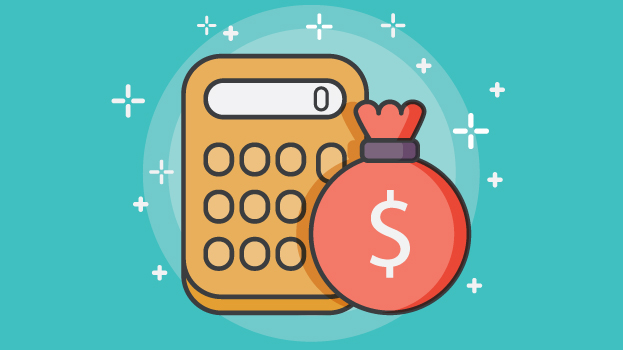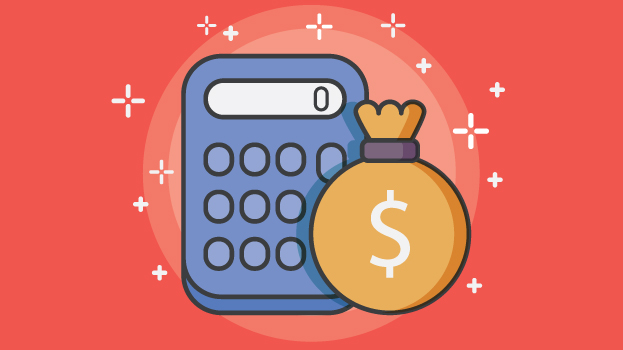It started off as a pandemic necessity for many, but most Australians are continuing to work from home, either full-time or a few days a week.
This is especially true with states forced to initiate lockdowns & introduce restrictions to curb the spread of the virus.
Whilst this has become the norm whilst we navigate the pandemic, many employers are set to continue supporting work-from-home arrangements in a post-COVID-19 world.
This means many taxpayers will continue to incur additional work-related expenses, including the costs of equipment and furniture for their home office, as well as an increase in their utility bills.
The good news is that it is possible to claim tax deductions for all these extra costs! But like all things relating to tax, it’s a little tricky to navigate. Let’s start with…
What work from home tax deductions can I claim?
When completing your tax return, you can typically claim for the work-related portion of household costs, such as:
- Heating, cooling and lighting bills
- Costs of cleaning your working from home area (including cleaning products or payment for a domestic cleaner if required)
- Depreciation of home office furniture and fittings
- Depreciation of office equipment and computers
- Costs of repairing home office equipment, furniture and furnishings
- Small capital items, such as furniture and computer equipment costing less than $300 can be written off in full immediately (they don’t need to be depreciated)
- Computer consumables (like printer ink) and stationery
- Phone (mobile and/or landline) and internet expenses
Ideally, you should have a specific room set aside as a home office. If you are using a room with a dual purpose (e.g. a dining room), or a room shared with others (such as a lounge room) you can only claim the expenses for the hours you had exclusive use of the area for work purposes.
How do I make a work from home tax deduction claim?
Australians have different options available with how they claim work from home deductions at tax time.
Generally, the easiest option is to claim the Australian Taxation Office (ATO)’s flat rate allowance for working from home of 52 cents per hour. This is designed to cover the extra costs of heating, cooling, lighting and the decline in value (depreciation) of furniture.
All you need to do to claim this is to keep a log book each day of the time you start work, the time you finish work and any breaks you take. You can then claim 52 cents per hour for each working hour.
In addition, you can also make separate claims for the work-related portion of items, such as your home internet, mobile phone costs and other expenses that directly relate to your work, like stationery, printer ink and even additional toilet rolls that you wouldn’t otherwise have purchased if you were working from your usual workplace.
Another option is to claim the actual costs you’ve incurred as tax deductions. You’ll still need to keep a diary of your work from home hours and you’ll also need to work out the amount of your home (by floor area) that you’re using as your work space.
From this, you can then work out the work-related portion of your household expenses and apply this percentage to the actual amount you spend on electricity, gas, water, phone and internet, etc. You can also make a claim for direct expenses like stationery, printer ink and cleaning materials if you use this method for claiming. You’ll also need to keep all the original bills to prove your claim.
This generally produces bigger tax savings than the 52 cents flat rate, but the amount of paperwork and calculation involved is much greater. Due to the increased complexity, you may decide to use a tax agent to help with your claim if you intend to use this method.
I’m only working from home temporarily because of COVID-19 – are the rules different for me?
In April 2020, the ATO announced it was introducing a temporary “shortcut method” of calculating additional running expenses, allowing those working from home to claim a rate of 80 cents per work hour.
Following an extension of this temporary measure announced by the ATO, you will be able to apply this rate for the period of 1st of March to the 30th of June 2020 in your 2019 / 20 tax return and 1st July to 30th June 2021 when you complete your 2020 / 21 tax return.
The ATO says it may extend this period further, depending on when work patterns start to return to normal.
To claim the shortcut method, you don’t have to have a separate or dedicated area of your home set aside for working, such as a private study.
You will, however, need to keep a record of the number of hours you have worked from home as a result of COVID-19. The ATO states you can only claim the deduction if you are:
- working from home to fulfil your employment duties and not just carrying out minimal tasks, such as occasionally checking emails or taking calls.
- incurring additional deductible running expenses as a result of working from home.
If you use the shortcut method, you must include the note “COVID-hourly rate” in your tax return, the ATO advises.
You can still use the 52 cents per hour flat rate method or claim actual expenses, but the calculations under those methods are probably a bit trickier for those who are working from home for the first time because of the coronavirus.
What proof of expenses do I need to claim work from home tax deductions?
If you use the shortcut method, you only need to keep a record of the hours you worked at home through timesheets or diary notes. For the 52 cents per hour method, you just need a diary of your working from home hours. For the actual expenses method, you’ll also need to keep all your work-related receipts and invoices. All your records should generally be kept for five years from the date you lodge your tax return.
Make sure you keep these records from now on – don’t try to recreate things retrospectively when tax time comes. You won’t be able to remember exactly what your working hours were without written records, and chances are you won’t be able to find all your receipts – meaning your claim could be lower than it should have been.
Be proactive, file receipts and bills somewhere safe and consider keeping electronic copies in one place on your phone or laptop.
All in all, whether you’re new to working from home or always have, the same tax deduction rules apply. Remember, you can’t claim deductions for items provided by your employer, or if you’re reimbursed for the expense.
If you receive an allowance from your employer to cover your work from home expenses you can either include this allowance as income in your tax return or claim a tax deduction for the expenses you incur.
Should you have further questions on the topic, we recommend heading to the ATO’s Knowledge Base which centralises a lot of useful information.
Please also note this material has been prepared for informational purposes only, and is not intended to provide, and should not be relied on for, tax, legal or accounting advice. We recommend you seek further clarification from your tax agent for tailored advice.
Disclaimer: Original notes for this article have been sourced from Canstar’s article here.













 August 12, 2021
August 12, 2021 






